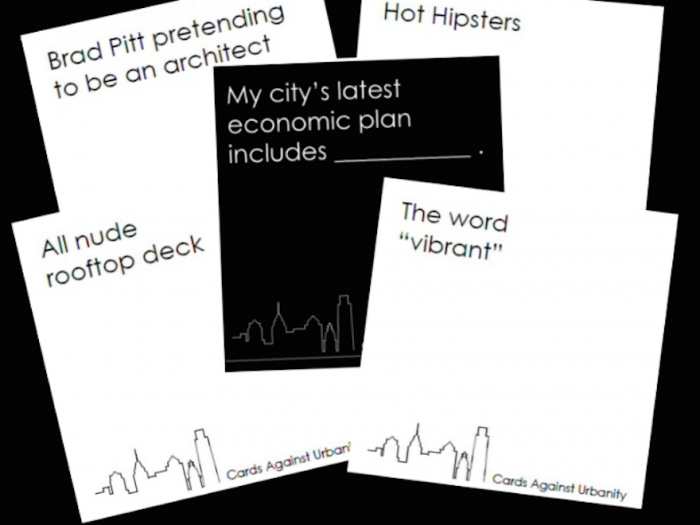
Whether there’s too much traffic on a busy street or an awkwardly placed traffic light, approaching the powers that be to solve the problems in your neighbourhood can be a daunting task. Urban planning is hard and technical, and full of jargon and math. It’s for this reason that GreaterPlaces and DoTankDC created “Cards Against Urbanity”, the game designed to bring urban planning and community design to the people.
Created as a spin-off of the popular “Cards Against Humanity”, the urban planner’s game is a snarky, cynical look at what its creators call the “drawn out, self-righteous planning process” that goes into urban design.
“We cringe when we go into meetings and hear designers talking about nubs and bulb-outs, while people from the community are like, ‘We just want to slow down traffic,’” one of the creators, Lisa Nisenson, told CityLab.
“Let’s stop looking at pretty pictures and talking about what happens in Denmark. Let’s talk about how to actually do this,” she adds.
Like its predecessor, the card decks have question and answer cards. Players take turns judging a question round. He or she picks a card with a question about cities and neighbourhoods. Players then try to appeal to the judge by throwing down answer cards from their hand. “It’s just like how real city planning happens!” say the game’s creators.
The game launched in 2014 after a more than successful Kickstarter campaign. Now, the team have come up with a concept for a more serious version of the card game geared at education rather than bar fun.
The next phase is a deck of cards with easy to understand descriptions and visuals of urban design jargon, methods, and solutions. Urban planners, architects, and designers could use this to spread out their ideas like a planning checklist. On the other hand, the cards could be used by a layperson to understand what urban planning solutions are needed in his or her environment. This could bridge the gap between those with the ability to make change and those who need the changes most.






